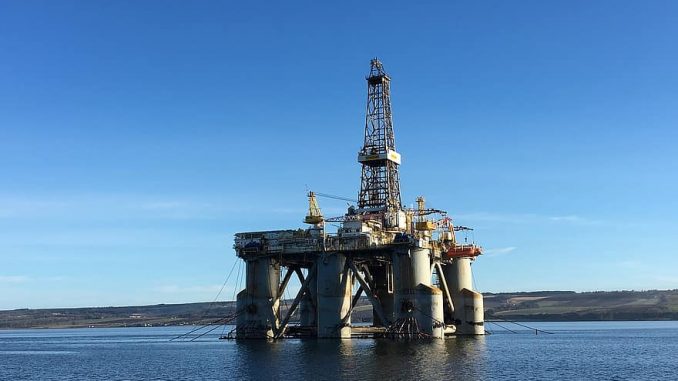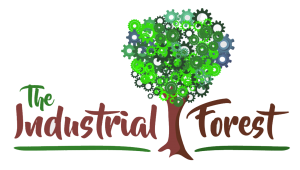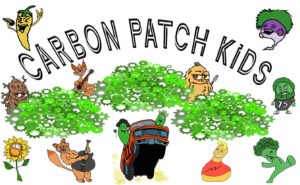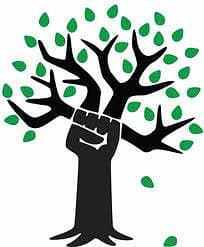
Oil and gas production in the Gulf of Mexico is an important part of the United States’ energy economy. This production is done safely by using a number of technologies and methods that have been refined over the years.
This article will discuss how oil and gas is produced in the Gulf of Mexico and the safety measures taken to ensure that the production is done safely and without any negative impacts to the environment.
Background
The Gulf of Mexico is home to some of the world’s largest oil and gas reserves. It is estimated that there are over 37 billion barrels of oil and gas reserves in the Gulf of Mexico, with production estimated to be over 1.5 million barrels per day in 2019.
This production is done by a variety of means, such as drilling and production platforms, subsea pipelines, and offshore floating production, storage, and offloading (FPSO) vessels. These methods allow for the extraction of oil and gas from the depths of the ocean floor, as well as from the seabed and subsea reservoirs.
The majority of the oil discovered in the ocean was from oil leaks from the ocean floor by natural causes. Natural causes include seismic activity, underwater landslides, and submarine volcanoes.
Seismic Activity
Seismic activity can cause oil leaks from the ocean floor by damaging offshore oil rigs and pipelines. Earthquakes and other seismic events can cause fractures in the ocean floor, which can then lead to oil leaks. For example, the Deepwater Horizon oil spill in 2010 was caused by a seismic event that triggered a blowout on the oil rig.
Underwater Landslides
Underwater landslides can cause oil leaks from the ocean floor by disturbing and dislodging pipes and other infrastructure. These landslides are often triggered by seismic activity, but they can also be caused by other factors such as ocean currents and changes in sea levels.
Submarine Volcanoes
Submarine volcanoes can also cause oil leaks from the ocean floor. When a submarine volcano erupts, the pressure from the magma can cause fractures in the ocean floor, which can then lead to oil leaks.
Safety Measures
In order to ensure that oil and gas production in the Gulf of Mexico is done safely, a number of safety measures have been put in place. These measures include:
• Strict Regulations: The United States has stringent regulations in place to ensure that oil and gas production in the Gulf of Mexico is done safely. These regulations are enforced by the United States Coast Guard, the Bureau of Ocean Energy Management (BOEM), and the Bureau of Safety and Environmental Enforcement (BSEE). These agencies ensure that all production activities are done in accordance with the regulations, and any violations are met with fines and other penalties.
• Advanced Technology: Oil and gas production in the Gulf of Mexico makes use of advanced technologies such as subsea remote operated vehicles (ROVs), autonomous underwater vehicles (AUVs), and remotely operated underwater vehicles (ROVs). These technologies are used to monitor the environment and safety of the production operations, as well as to help in locating and extracting the oil and gas from the seabed and subsea reservoirs.
• Environmental Monitoring: Oil and gas production in the Gulf of Mexico is done in accordance with environmental regulations and standards, which include the monitoring of water quality and marine life. This monitoring is done to ensure that the production activities do not have any negative impacts on the environment. The BOEM and BSEE also work with companies to develop best practices and technologies to minimize any potential impacts.
• Emergency Response Plans: Emergency response plans are also in place to ensure that oil and gas production in the Gulf of Mexico is done safely. These plans are designed to respond to any potential spills or other disasters that may occur during production activities. The plans include strategies for containment and cleanup, as well as emergency response teams to help mitigate the impacts of any spill.
Conclusion
Oil and gas production in the Gulf of Mexico is an important part of the United States’ energy economy. To ensure that this production is done safely, a number of safety measures have been put in place, including strict regulations, advanced technology, environmental monitoring, and emergency response plans.
These measures help to ensure that oil and gas production in the Gulf of Mexico is done safely and without any negative impacts to the environment.
Submit your Article Ideas to The Crude Life! Email studio@thecrudelife.com
About The Crude Life
Award winning interviewer and broadcast journalist Jason Spiess and Content Correspondents engage with the industry’s best thinkers, writers, politicians, business leaders, scientists, entertainers, community leaders, cafe owners and other newsmakers in one-on-one interviews and round table discussions.
The Crude Life has been broadcasting on radio stations since 2012 and posts all updates and interviews on The Crude Life Social Media Network.
Everyday your story is being told by someone. Who is telling your story? Who are you telling your story to?
#thecrudelife promotes a culture of inclusion and respect through interviews, content creation, live events and partnerships that educate, enrich, and empower people to create a positive social environment for all, regardless of age, race, religion, sexual orientation, or physical or intellectual ability.
Sponsors, Music and Other Show Notes

Studio Sponsor: The Industrial Forest
The Industrial Forest is a network of environmentally minded and socially conscious businesses that are using industrial innovations to build a network of sustainable forests across the United States.
Weekly Sponsor: Stephen Heins, The Practical Environmentalist
Historically, Heins has been a writer on subjects ranging from broadband and the US electricity grid, to environmental, energy and regulatory topics.
Heins is also a vocal advocate of the Internet of Everything, free trade, and global issues affecting the third of our planet that still lives in abject poverty.
Heins is troubled by the Carbon Tax, Cap & Trade, Carbon Offsets and Carbon Credits, because he questions their efficacy in solving the climate problem, are too gamable by rent seekers, and are fraught with unreliable accounting.
Heins worries that climate and other environmental reporting in the US and Europe has become too politicized, ignores the essential role carbon-based energy continues to play in the lives of billions, demonizes the promise and practicality of Nuclear Energy and cheerleads for renewable energy sources that cannot solve the real world problems of scarcity and poverty.
Look at what’s happened to me.
I can’t believe it myself.
Suddenly I’m down at the bottom of the world.
It should have been somebody else
Believe it or not, I’m walking on air.
I never thought I could feel so free-e-e.
Barterin’ away with some wings at the fair
Who could it be?
Believe it or not it’s just me
The Last American Entrepreneur
Click here of The Last American Entrepreneur’s website

Studio Email and Inbox Sponsor: The Carbon Patch Kids
The Carbon Patch Kids are a Content Story Series targeted for Children of All Ages! In the world of the Carbon Patch Kids , all life matters and has a purpose. Even the bugs, slugs, weeds and voles.
The Carbon Patch Kids love adventures and playing together. This interaction often finds them encountering emotional experiences that can leave them confused, scared or even too excited to think clearly!
Often times, with the help of their companions, the Carbon Patch Kids can reach a solution to their struggle. Sometimes the Carbon Patch Kids have to reach down deep inside and believe in their own special gift in order to grow.
The caretakers of Carbon Patch Kids do their best to plant seeds in each of the Carbon Patch Kids so they can approach life’s problems with a non-aggressive, peaceful and neighborly solution.
Carbon Patch Kids live, work and play in The Industrial Forest.
Click here for The CarbonPatchKids’ website

Featured Music: Alma Cook
Click here for Alma Cook’s music website
Click here for Alma Cook’s day job – Cook Compliance Solutions
For guest, band or show topic requests, email studio@thecrudelife.com
Spread the word. Support the industry. Share the energy.





